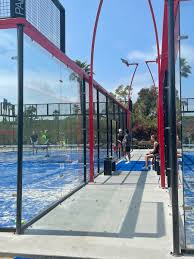

The Evolution of Racquetball Racket Manufacturers
Racquetball, a fast-paced indoor sport created in the 1950s, has captivated players around the globe with its exhilarating pace and strategic depth. At the heart of this dynamic game is the racquet itself. Over the years, racquetball racket manufacturers have evolved significantly, innovating designs and materials to enhance performance and elevate the player’s experience.
The Origins of Racquetball Rackets
When racquetball first emerged, the equipment options were limited. Early racquetball rackets were primarily made from wood, similar to those used in other racquet sports like tennis and squash. These wooden rackets were robust and offered players a solid grip and heft. However, as the sport gained popularity, manufacturers began to experiment with different materials, seeking to create lighter and more durable options.
The Shift to Modern Materials
The 1980s marked a turning point in racquetball racket design with the introduction of materials like aluminum and graphite. These materials allowed manufacturers not only to reduce the weight of the rackets but also to enhance their power and control. Graphite, in particular, became a game-changer due to its incredible strength-to-weight ratio, offering players quicker swings and better maneuverability.
Manufacturers like Ektelon, Head, and Wilson began producing rackets that catered to the needs of both recreational and competitive players. These brands harnessed advanced material technology, leading to rackets that featured a combination of graphite, titanium, and other composites. This shift not only broadened the market but also spurred a wave of innovation as companies sought to differentiate their products.
Design Innovations
Racquetball racket manufacturers have constantly innovated in design, not just in materials. The sweet spot, which is vital for hitting the ball effectively, has been a focal point of improvement. Modern rackets are designed with larger head sizes and unique string patterns, maximizing the sweet spot and enabling players to hit the ball with greater precision and power.
Moreover, technology has influenced racket design significantly. Computer-aided design (CAD) allows engineers to simulate and test racket performance before physical prototypes are made. This means that each racket can be fine-tuned to achieve the ideal combination of weight, balance, and stiffness, catering to different playing styles.

Specialization in Products
As the sport continues to grow, so has the specialization of racquetball rackets. Manufacturers now offer a broad range of products tailored to various skill levels and playing styles. Beginners might opt for rackets designed for forgiveness and ease of use, often featuring a larger head and more flexible frame. Meanwhile, advanced players might seek out rackets that offer more control and precision, often with stiffer frames and lighter weights.
Companies like Dunlop and Gearbox have carved niches in the market by introducing unique designs and racket technologies, such as the Gearbox’s innovative “Carbon Fiber Technology,” which enhances both durability and performance. Many brands also emphasize ergonomics, designing grips that reduce fatigue and improve comfort during long matches.
Sustainability in Manufacturing
In recent years, sustainability has become an essential consideration for racquetball racket manufacturers. As awareness of environmental issues grows, companies are looking for ways to produce rackets that have a lower environmental impact. This includes using eco-friendly materials, implementing sustainable practices in production, and even creating recycling programs for old equipment. Brands like Wilson and Ektelon have made strides in this arena, emphasizing their commitment to sustainability in their marketing and product lines.
Looking Ahead
The future of racquetball rackets appears promising as technology continues to advance. With the convergence of materials science and engineering, manufacturers are likely to produce even more sophisticated products that can meet the demands of today’s players. Smart technology, including sensors that provide real-time data on swing speed and hitting accuracy, may soon become standard in the next generation of racquets.
Conclusion
The journey of racquetball racket manufacturers from wooden models to high-tech, specialized equipment highlights the sport's evolution. As innovations continue to emerge, players can look forward to improved performance, greater comfort, and more sustainable manufacturing practices. Whether you are a beginner or a seasoned player, there is a world of options available to elevate your game in this exciting sport. Racquetball is not just about speed and agility; it's also about the tools we choose to play the game, reflecting the sport’s dynamic nature through its continuously evolving equipment.
Premium Rubber Composite Floor for Ultimate Durability & Safety Rubber Floor Mat Solutions
High-Quality Industrial Flooring Solutions for Factories Expert Installation & Cost Saving
Premium Rubber Brick Flooring Durable & Slip-Resistant
Durable & Non-Slip Rubber Flooring for Gym, Garage, Home
Durable Industrial Flooring Solutions China Padel Install
Durable Rubber Floor Slip-Resistant & Easy Clean